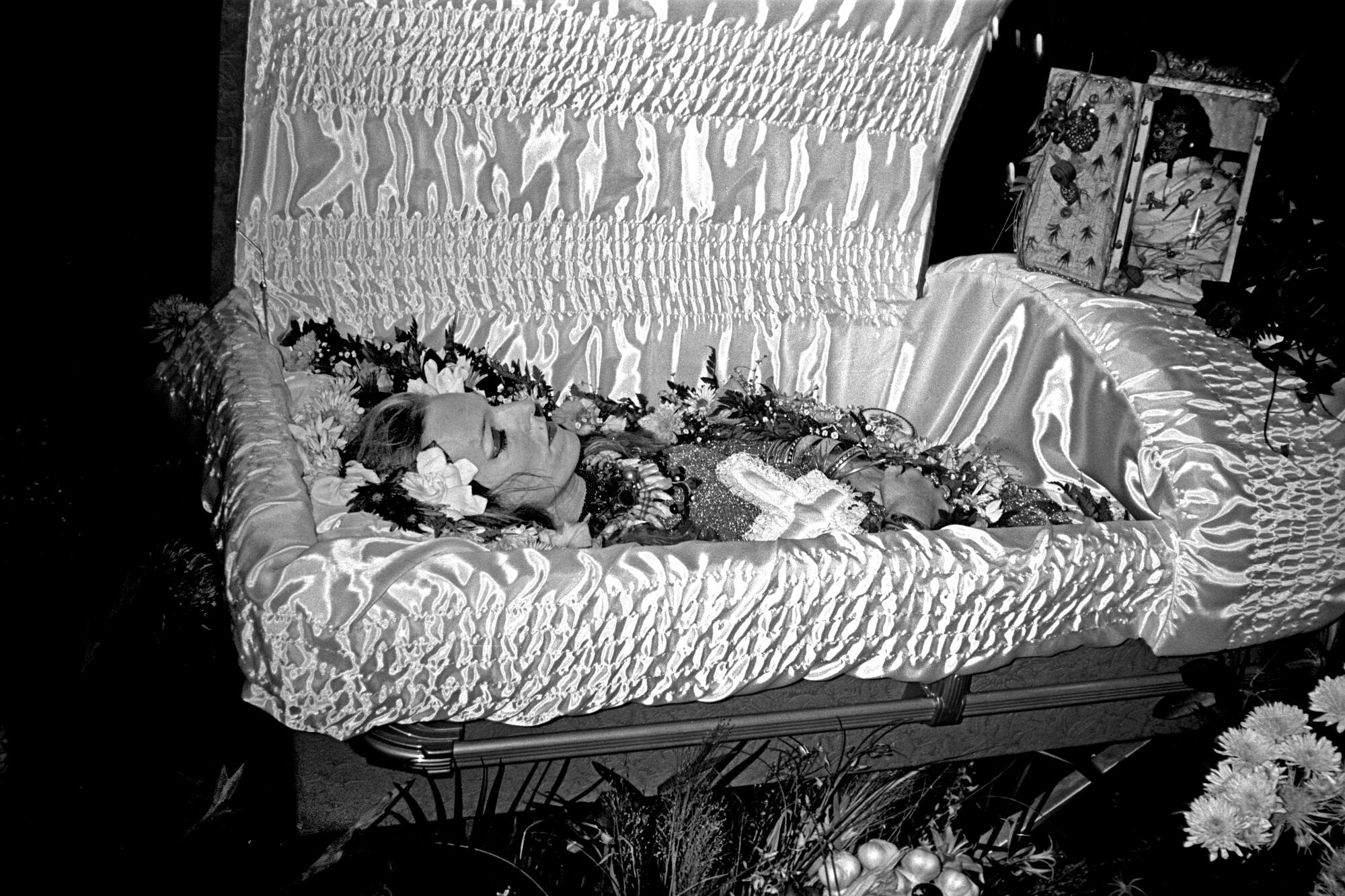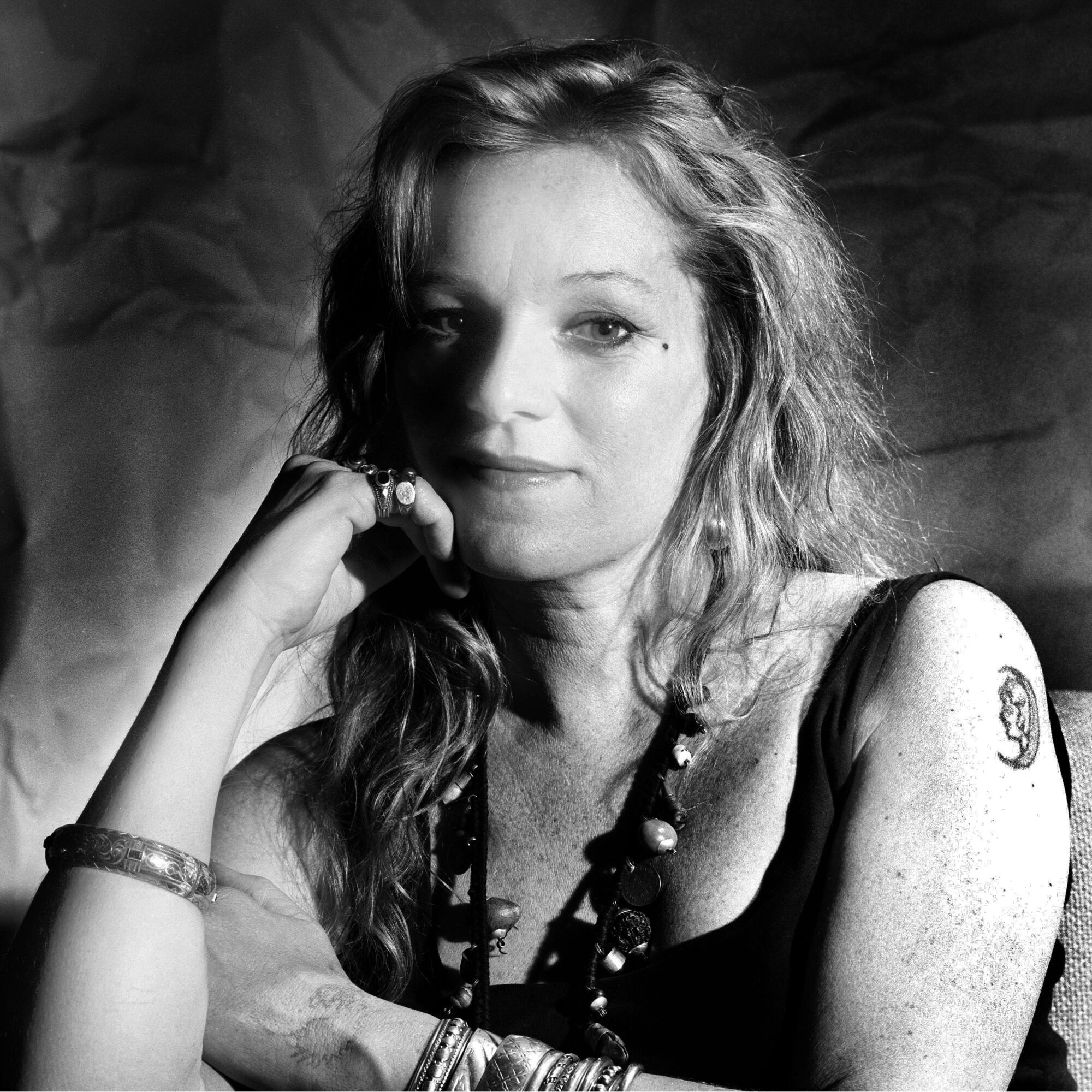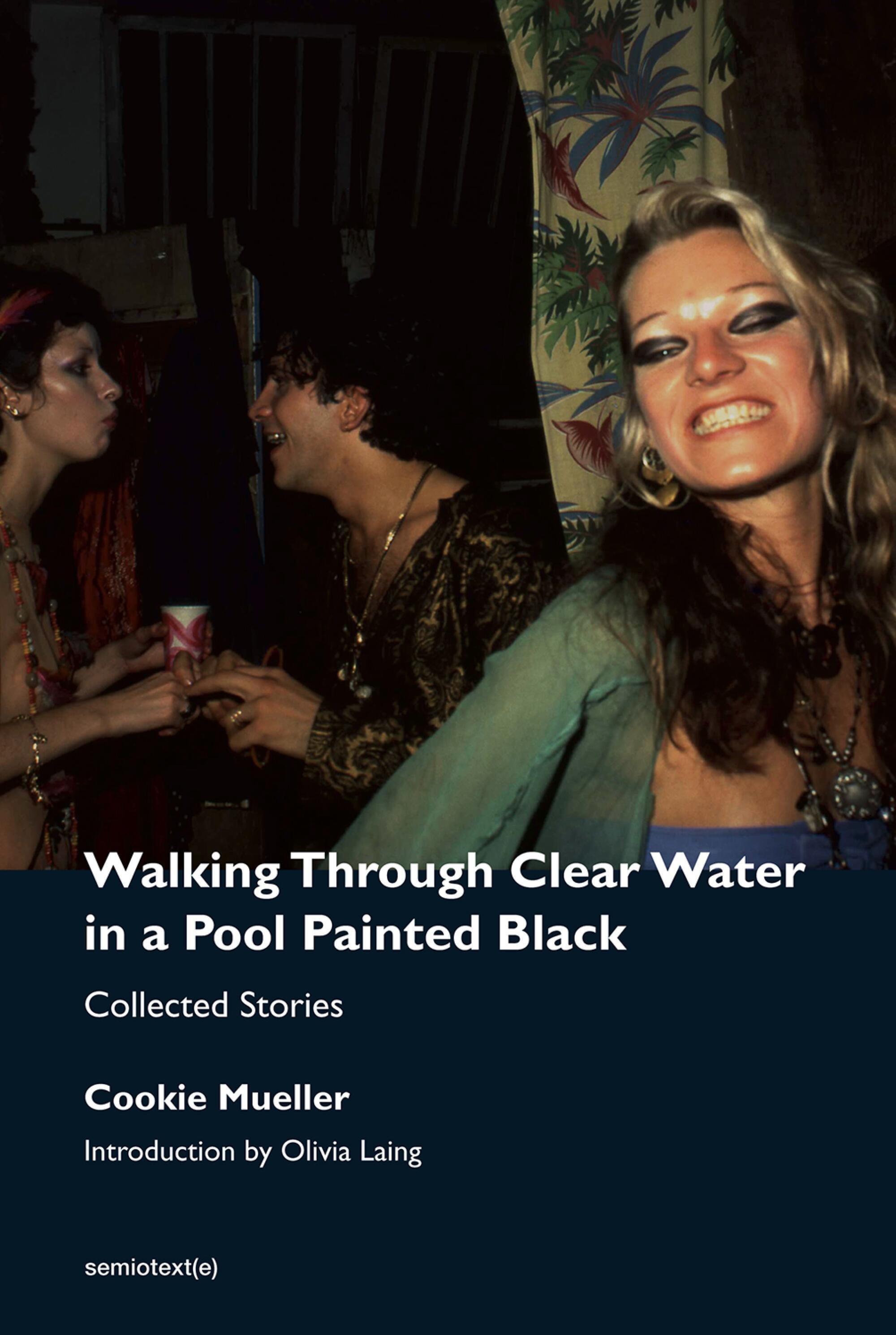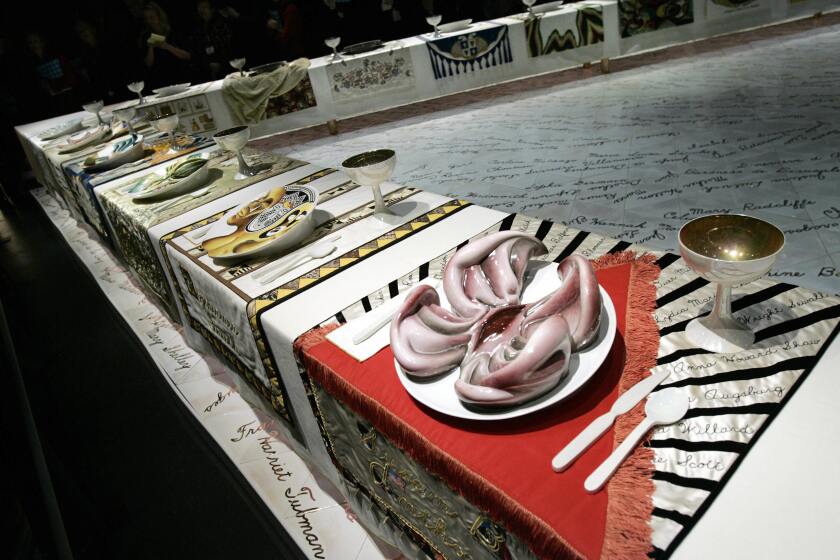
On the Shelf
Walking Through Clear Water in a Pool Painted Black, New Edition: Collected Stories
By Cookie Mueller
Semiotext(e): 432 pages, $18
If you buy books linked on our site, The Times may earn a commission from Bookshop.org, whose fees support independent bookstores.
The first time I saw a photograph of Cookie Mueller, it was the portrait Nan Goldin had taken of her in her casket. Shimmering in gold, like a mosquito encased in amber, Mueller lay supine, arms crossed in front of her like an Egyptian pharaoh.
Mueller was an It Girl, discovered by John Waters for his film âMultiple Maniacsâ in 1970. When Mueller met Waters, she writes, âI felt like I was meeting my new family.â After learning the cult filmmaker was born prematurely, âI envisioned him as an infant, compact like a pound cake, lying in a clear plastic preemie life support box ... already rococo and bursting his bunting wrapper with his dreams and plans of film scenarios.â
âWalking Through Clear Water in a Pool Painted Black,â a newly expanded collection of her complete stories (some true, some not, some in between), provides many opportunities to fall in love with Mueller. Burning her friendsâ house down; being nearly sacrificed by Anton LaVey on Mt. Tamalpais; saving her friend from overdosing at his birthday party; describing the birth of her son, Max: âI was the grand martyr. Prometheus knew no pain like this. Lamaze had liedâ; fleeing her would-be rapist in the dead of night; escaping a serial murderer in a G-string. âWhy does everybody think Iâm so wild?â she asks. âIâm not wild. I happen to stumble onto wildness. It gets in my path.â
âI thought it would be a perfect show to have at Oscar time,â the gleefully perverse filmmaker says of his gallery exhibition, âHollywoodâs Greatest Hits.â
Semiotext(e) first published Mueller in a collection of stories from her life under the same title in 1993. Those are expanded and grouped by location: Baltimore, Provincetown and New York. Also included are Muellerâs columns, âAsk Dr. Muellerâ and âArt and About.â
New is a series of disarming fables. In âValerie Losing 2,â a woman wakes up to discover one of her toes is missing, and also: âIn the last fifteen years she had lost a lot, beginning with her virginity. She had lost two husbands, countless girlfriends, passports. ... She had lost so much it was just something else to mourn over for a bit. She took it in stride.â

The title of the collection comes from the story âRoute 95 South â Baltimore to Orlando,â in which Mueller and her friend Lee get picked up by a man named Cleo who is robbing empty houses along the expressway. When Mueller spies a small gold statue of Pan, she puts it in her bag. Though he has his back to her in the car, he tells her to take it. She apologizes, shocked that he caught her. âYou canât hoodwink a hoodwinker.â
After getting dropped off in Georgiaâs Okefenokee Swamp, she writes: âThere was no moon. The sky was like black cotton batting that enveloped us in a way that felt like walking through clear water in a pool painted black. ... We kept walking and walking, blindly in the dark, along the deserted road that we couldnât see underfoot. There were no points of horizon, no beginning, no end to the highway.â
Many have stumbled onto wildness and never written anything of consequence. But Mueller was always writing, putting one foot in front of the other toward a horizon with no beginning and no end.
Catherine McCormack, a course director at Sothebyâs, talks about her new book, âWomen in the Picture: What Culture Does With Female Bodies.â
The evidence of her talent and wit bubbles off the page. Mueller writes with all the charm and warmth of Eve Babitz. When her mother gets a hold of the script for âPink Flamingosâ and reads that Muellerâs character has sex with a chicken, the result is explosive. âART?!?!?! ART!?!?! THIS ISNâT ART!!â ... âMom, hold on. Sit down.â Waters pulls up in the driveway. âIS THAT MANIAC OUT THERE?!? IâM GOING TO GIVE HIM A PIECE OF MY MIND.â âDid she read the script or something?â Waters asks. âShe was brought up in the Deep South as a Southern Baptist. That was high drama,â Mueller says. âSheâs an actress.â Waters responds with a laugh: âMaybe I ought to give her a part in the film.â

After several trips to Italy, Mueller fell in love with an artist named Vittorio Scarpati. The two were married in New York in 1986. At the time, she was writing âAsk Dr. Muellerâ for the East Village Eye, offering health advice without any professional qualifications. The column begins with queries about cellulite and apple cider vinegar. Then, in a response to one correspondent who complains of a small penis, Mueller abruptly writes, âIâm not going to talk about AIDS ... Iâve had too many beloved friends die lately from diseases contracted when the immune system breaks down. Iâm tired of going to wakes. I miss these people.â
When Scarpatiâs lungs collapsed, many blamed the particles (and the many cigarettes) he had inhaled as a sculptor and restorative artist. But it was AIDS. In one of her last columns for Details magazine, Mueller wrote that Scarpati had been finally driven to create his own art when he was in the hospital. âDid he need to be physically tied down to finally do his important work?â she asks. âVittorio has learned that like a flood of sunlight, hope can vanquish gloom ... I hope he comes home soon.â
Mueller was living on borrowed time too. While Scarpati was in the hospital, she and her friend, artist Scott Covert, went to Provincetown, Mass. âShe had this card that I found,â Covert remembers in Chloe Griffinâs oral biography of Mueller, âEdgewise.â âIt had something she would repeat to herself, for some kind of visualization, like a mantra: âI will live long enough to write my novel â one year, two years ... .â I donât know what the novel was about; maybe her life. She wanted to dedicate it to her son.â
Goldin photographed Mueller standing in front of Vittorioâs casket. âIâd always believed that if I photographed anything or anyone enough, I would never lose them,â Goldin wrote in her 1998 book âCouples and Loneliness.â âWith the death of seven or eight of my closest friends and dozens and dozens of my acquaintances, I realize there is so much the photograph doesnât preserve. ... It doesnât preserve a life.â
Mueller never got to finish her novel. She died of AIDS on Nov. 10, 1989, at 40, just three months after Scarpati. âWalking Through Clear Waterâ is an important recovery of the work she did manage to get down. âI started writing when I was six and have never stopped completely,â Mueller writes. âI wrote a novel when I was twelve and put it in cardboard and Saran Wrap, took it to the library and put it on the shelves in the correct alphabetical order.â
A guide to the literary geography of Los Angeles: A comprehensive bookstore map, writersâ meetups, place histories, an author survey, essays and more.
The water might be clear but the pool is painted black. The newly collected writings â including the gut-wrenching âLast Letter,â which closes out the collection with the directive âCourage, Bread, and Rosesâ â bolster the evidence Mueller is much more than an It Girl. She is a writer. Though most of the people who knew her (or knew of her) focus on her vibrant, untameable energy, when that energy dissipates it leaves a yawning black hole. Muellerâs writing, and struggle to write, canât be separated from her experience of living.
In that sense, paradoxically, Mueller lives. To quote the writer Kathy Acker, who died from breast cancer at the age of 50, âIâm not superstar sâ and will never be. If anything, Iâm what happens after death, which is writing.â
Ferriâs most recent book is âSilent Cities: New York.â
More to Read
Sign up for our Book Club newsletter
Get the latest news, events and more from the Los Angeles Times Book Club, and help us get L.A. reading and talking.
You may occasionally receive promotional content from the Los Angeles Times.








